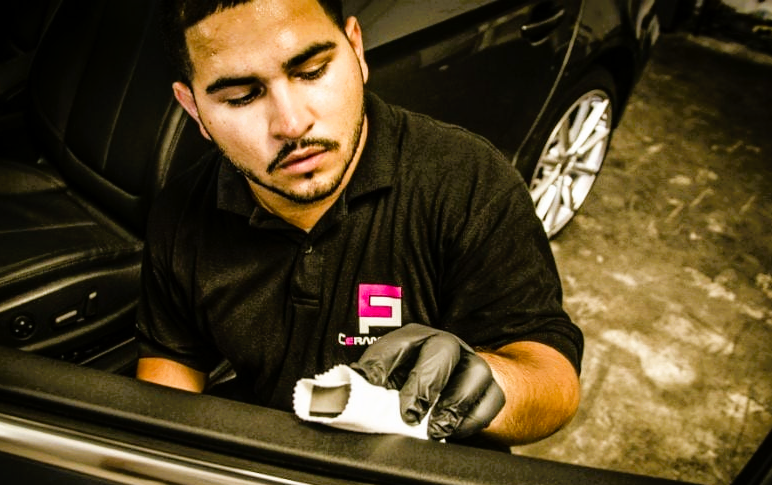The Interesting (Upcoming) Future of Autonomous Cars
The utilization of computerized reasoning (computer based intelligence) in car applications isn’t open for banter. The main conversation right presently fixates on how rapidly businesses can propel this innovation and genuinely upset all we have had some significant awareness of how both the vehicle and the bigger car world work. This focuses on independent vehicles yet is a lot more extensive than that. Traces of man-made intelligence and its effect are as of now showing up, yet shoppers ought to prepare themselves for a lot greater change soon (as in the up and coming age of vehicles).
Jensen Huang, President of NVIDIA, sets the stage: “however long we have been planning PCs, man-made intelligence has been the last outskirts. Building clever machines that can see the world as we do, grasp our language, and gain from models has been the all consuming purpose of PC researchers for north of fifty years.”
Pursuing that wilderness has connected with not just tech organizations like Google, Facebook, and Apple however conventional auto organizations like Toyota and Portage. Toyota laid the glove down close to the furthest limit of 2015, declaring that it would begin another organization, Toyota Exploration Establishment, and contribute $1 billion more than five years fully intent on speeding up Research and development and overcoming any issues among examination and items. Toyota sees the ramifications of this innovation in wellbeing, upgraded vehicle access, and expanded versatility for seniors.
Portage moreover dropped $1 billion into Argo computer based intelligence in a bid to accelerate its independent vehicle program. It desires to make a “virtual driver framework,” a product “cerebrum” that might actually be authorized to different organizations.
Step Back briefly
Think about this: vehicles used to be simply apparatuses, made for one specific assignment. You got in and guided them yet additionally directed them, halted them, and were in charge.
In the event that you haven’t seen, present day innovation is working on those revered practices, and it’s great. A developing number of vehicles in all value reaches will presently keep you in your path on the off chance that you float, stop your vehicle faster than you can, and alert you to perils. Obviously, things like versatile voyage control that can take over both the gas pedal and the brake are becoming old information.
The following rush of self-driving vehicles will in any case have a human in the driver’s seat (we have several levels to go until we arrive at full independence). We’re at Level 2 on the five-level size of independent driving. The innovation currently tracked down in vehicles, for example, versatile/radar journey control, path keeping innovation, and related tech permits you to take your hands off the haggle off the pedals.
Numerous automakers are hoping to skirt Level 3 (a hodgepodge of independence and driver help) and move right to the completely independent Level 4. In the interim, Level 5 is the Sacred goal accomplished so far simply by DARPA Challenge champs making their own streets through the desert. Nonetheless, this is a laborious test, as at that level the vehicle should take on a similar mindset as a human driver. As a matter of fact, it necessities to think better compared to a human driver on the off chance that supplanting one is going.
Planning quick PCs that can interaction lots of information is an essential step towards making totally independent vehicles. The human mind processes large number of pieces of data quickly while driving. Agile PCs that could recreate this have simply started to show up, depending on distributed computing and other refined procedures in light of high velocity wired and remote associations.
Yet, as noticed, the independent vehicle needs to accomplish something other than track the street, keep up with speed, and stop on a case by case basis. The vehicle likewise needs to respond to surprising obstruction – a cyclist steering into the street, a jaywalker, a vehicle floating out of its path, and some other unanticipated occasions of human blunder. People respond in view of their experience and mindfulness. Man-made intelligence machines, as indicated by NVIDIA VP Loot Csonger, “work on over the long run with extra preparation information and testing.” That is with simulated intelligence frameworks that Csonger says “have levels of discernment and execution a long ways past people, and critically, don’t get occupied, exhausted, or hindered.”
The keys here are profound learning and AI, two related ideas both managing PCs’ capacity to embrace specific ideas regardless of whether they haven’t been unequivocally customized to, subsequently the expression “man-made consciousness.” Csonger’s organization, NVIDIA, makes the realistic handling units (GPUs) that are the cerebrums of simulated intelligence machines, making them quicker and more astute. NVIDIA presently works with most of auto organizations around the world (225 altogether), empowering the transition to more intelligent “cerebrums” for vehicles.
The Minds of the Machine
What permits the human mind to think? It’s not something we will more often than not invest a lot of energy considering, however man-made intelligence researchers generally center around it. They take a gander at the brain networks handling data from an individual’s eyes, nose, mouth, fingers, and skin. Obviously, the human cerebrum adds a layer of previous experience and perhaps some surmised information in view of something read or heard. Or on the other hand in some cases an individual can respond non-directly, out of nowhere choosing to take an alternate course on the grounds that the street seems as though it has lighter traffic or better landscape.
Both tech and car ventures see an innate impediment assuming these shrewd vehicles are simply projected out into the auto scene all alone. Indeed, they might be more secure and more brilliant than a human driver, however there will be a lot of human drivers out and about for quite a while to come. Therefore, an equal push alongside self-driving innovation is for more vehicle-to-vehicle (V2V) network and more vehicle-to-foundation (V2I) correspondences (more information for that PC cerebrum to retain). By then the machines will dominate, preferably introducing a time of expanded security and portability.
That multitude of associations raise issues past how the vehicle will work in reality. Associated vehicles are helpless against hacking, as has been shown on numerous occasions during the beyond quite a long while. Here’s where artificial intelligence might assume another part. Eli David, a specialist in computational knowledge and CTO of Profound Sense, a security firm with establishes with all due respect industry, needs to utilize artificial intelligence to even the chances against cyberhackers. In his meeting with Michael Copeland, David made sense of that it “takes… around 24 hours in a single day to prepare [the] fake mind. Had we not run it on GPUs, it would have required three months.” He trusts this preparing will give the security business the high ground against programmers as, as per David, 1,000,000 new bits of malware are made consistently.
Of all shapes and sizes Organizations Cooperating
This development is all occurring at the crossing point of visual handling, superior execution figuring, and man-made brainpower. The objective is to stay away from an impact. Furthermore, to ensure that doesn’t occur, somebody needs to assume responsibility. An illustration of the most dire outcome imaginable was when California proposed new guidelines for independent vehicles a couple of years prior. The proposed guidelines required the organization mentioning to test a self-driving vehicle on open streets to get consent from every area it finished through on its assessment way. Google drove the pushback on the Branch of Engine Vehicles, as they would have needed to manage in excess of twelve unique locales to run down the road from their central command in Mountain View to local San Francisco. The guideline was changed, however it features the expected issues of interwoven standards for this industry.
Then again, the neighborhood purviews are the ones who will be on the bleeding edges when independent vehicles hit the road. Nearby police, leaving requirement work force, and policing should manage any issues raised when the driver isn’t in charge of the vehicle. It’s a preface to what’s in store when the driver might leave the vehicle totally, as was exhibited by Mercedes-Benz and Bosch in a self-parking structure in Germany. In that exhibit, Bosch programming and Daimler (Mercedes) vehicle innovation were consolidated in a cell phone application that would take the vehicle to its assigned parking spot all alone and return it when gathered.
The computer based intelligence/independent world is additionally convoluted by the unions and affiliations that mark this new region. While tech organizations have for some time been engaged with the vehicle business, the sort of plans presently being fashioned are at an alternate level. For example, Waymo-Fiat Chrysler Vehicles intends to get 500 independent minivans out and about in Phoenix. Uber has additionally framed a coalition with Volvo and Portage to send independent vehicles in Pittsburgh and San Francisco. Many more modest tech organizations are additionally tracking down consolation, subsidizing, and support from both auto organizations and tech enterprises as self-driving vehicles and innovation walk forward.
The rundown of auto organizations (and in excess of a couple of tech organizations) pushing toward completely mechanized vehicles is long. Some have said they’ll be there in 2020, some in 2021, and others later in the ten years. Tesla, as anyone might expect, has said it as of now has the equipment introduced in its vehicles to convey full independence, albeit the empowering programming is still a work in progress. However, Tesla has implied it could carry out the product as soon as the following year. Cadillac will make a big appearance its Super Voyage framework on the 2018 CT6 in fall 2017. GM portrays Super Journey as a program “where the vehicle is doing the driving, and the human is directing it. It’s an unequivocally uninvolved framework.” Audi’s simply saw 2018 A8 incorporates what it is calling “Man-made intelligence Gridlock Pilot,” another hands-off framework intended to work under 37 mph on partitioned parkways. The organization is likewise including computerized leaving that can leave the vehicle from a telephone application without the driver inside.














Post Comment